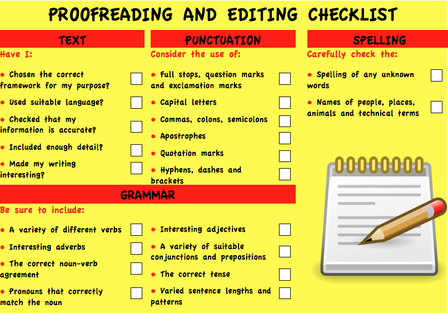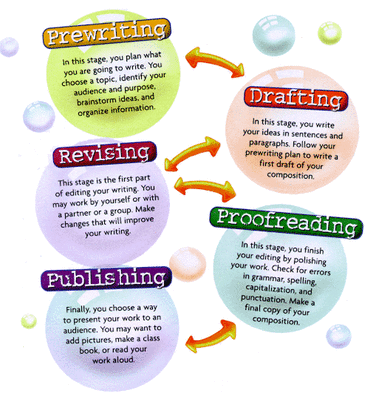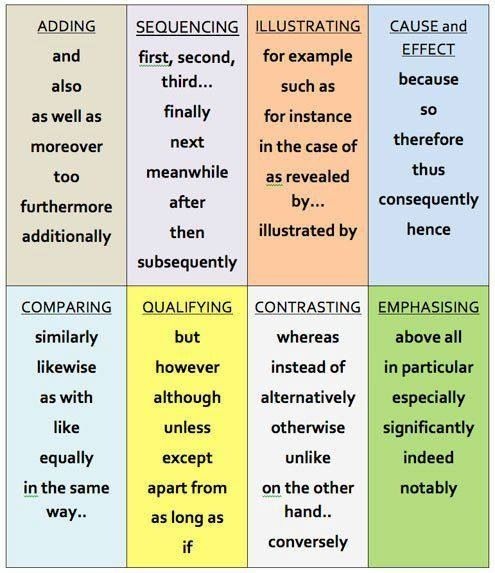Troubleshooting Guide for Writing
Read Like a Writer
You'll be a better writer when you Read Like a Writer. Read, read, read. For some ideas about what writing looks like at your grade level and others, click on the examples at right. Which of these sounds the most like you own informative writing?
|
Personal Narrative
|
Informative
|
The Writing Process
|
In general, we attempt to follow a process that maximizes our writing potential (That means we do things this way to improve our writing.). If you are serious about making improvements - learning how to communicate well - you must pay attention to the process.
Think things through!
Different authors work in different ways. Some like to outline their entire stories before they begin, while others prefer to let the story develop naturally as they write. There are many levels of prewriting that may be used. At any rate, you must put some thought into your subject of story before you begin.
Make a mess!
The rest of the process is fluid. You might enjoy editing along the way, moving things around, correcting spelling errors, adding alliteration or figurative language, and proofreading. For me, the drafting, revising, editing (or proofreading), and the publishing aren't linear steps, but are all things I do along the way. I don't do one step and then another; I combine them into one big messy process or writing.
|
Writing Traits
Click each of the six subtitles below for graphic explanations of the traits.
|
I like this piece, and my audience will like it, too. Why do you
like it? Why will your audience like it? I really care about my topic. Why do you care about it so much? Did you put that in the piece? You can tell exactly how I feel. How do you feel about this topic? Did you write that down? COMPLETIONS I like this piece because... (The more you like it, the more your audience will probably like it, too.) I wanted to write about this topic because... (The best things to write about are the things you choose yourself.) The feelings I have about this piece are... (Make sure you write those feelings down.) |
I capitalized proper nouns and the like. Are there any other words that specifically name something?
I capitalized the first word of each sentence. Did you check the words that come after each end mark? I put the correct end mark at the end of each sentence. Did you check for run-on sentences? I correctly used commas and quotation marks in my writing. Do you need to indent for new lines of dialog? COMPLETIONS I want my readers to read my piece with the correct inflection and understanding. (You would prefer readers to read it the same way you imagined it.) Proper use of writing conventions make this happen because... (How does proper grammar help?) |
I used words that I know and understand. Are there any words
in your piece that you don't understand? I used some interesting words that you'll remember. Which words are the most interesting? I used just the right words to say exactly what I wanted to say. Did you think about different ways to say what you wanted to say? COMPLETIONS The best words in my piece are... (Try to include at least one or two interesting words if you can.) You'll remember these words from my piece because... (Unusual words are often the easiest for people to remember.) I chose these words because... (Why are some words better than other words?) |
I created sentences with varying lengths. Do the sentences all sound alike and monotonous?
I used phrases that have rhythm and flow. Are my sentences fun and interesting to read? Did you use alliteration or onomatopoeia? I used figurative language to help my sentences come to life. Did you use metaphors, similes, personification, hyperbole, and idioms? COMPLETETIONS My writing is easy to read because... (Sentences should not be awkward. Think about how words fit together to help your writing flow.) I used a variety of sentence patterns because... (Why is it important to vary sentence length?) The more descriptive sentence I wrote is... (How does this sentence bring things to life?) |
My writing has an important message. What's the one most important thing you want the audience to know?
I included lots of interesting details. Which details are the most interesting? I wrote this for a good reason. Why did you write this piece? Why is this a good reason? COMPLETIONS The one most important thing I want my audience to know is... (This is the main idea. Make it a complete sentence.) The most interesting thing about my topic is... (Sometimes it's good to move this part up to the beginning of the piece.) I wrote this because... (The end of this sentence often makes a good ending.) |
My beginning will make you want to find out more about my piece. What will the audience want to know about?
My ending will make you think about something important. What do you want your audience to think about? I put everything in the best order. Are there any places where your audience might get confused? COMPLETIONS You'll be interested in my story because... (Sometimes you can turn this into a good beginning.) You should remember my piece because... (This can make a good ending.) The most important part of my piece is... (Make sure this part stands out.) |
STAY FOCUSED (More about Organization)
|
This paragraph (right) is a bad example; it demonstrates what a paragraph sounds like when the writer gets off track. Notice some things that did not belong?
|
Missouri is a great state in which to live. Not only is Missouri naturally scenic, but there are also urban areas to visit. There are different types of jobs in Missouri. I am interested in becoming a geologist. Missouri has weather that changes with the seasons. The weather in Arkansas is similar. If you want to visit an amazing state, you should think about coming to Missouri. |
SAY IT ALOUD (MORE ABOUT word choice and sentence fluency)
Read what you just wrote; is it easy to read? Do the words have rhythm? Or are the sentences awkward? Sometimes reading your writing out loud is the secret to finding the things that can be improved. Ask someone else to read your writing, too. Have them read it out loud so you can hear it. Does he or she understand your ideas? If not, perhaps you need to rewrite it to make everything more understandable.
And it there's no one around to read it to you, read it to your pet, your stuffed animals, or to your bedroom wall!
And it there's no one around to read it to you, read it to your pet, your stuffed animals, or to your bedroom wall!
INDENT (MORE ABOUT conventions)Always indent before starting a paragraph. If you have a small index finger then use two fingers. If you have a big index finger then you are fine.
USE TRANSITIONS (MORE ABOUT conventions)Sometimes the thing you need to get your writing from one place to another is a the simple addition of transition words.
Transition words are the signposts that guide your readers down the pathway of your writing. Some words you may consider are in the chart at left. |
|
Personal Narrative
(MORE ABOUT IDEAS AND ORGANIZATION) PlotYour story must have a beginning, middle, and end.
The beginning introduces your main character and establishes the setting. The middle continues the plot. This is the area in which your main character(s) usually encounters a problem. In the end, the problem should be resolved. Character DevelopmentMake the reader understand your character's motivations and feelings throughout your narrative. Let the reader in on the character's thoughts.
SettingTo really "show" the reader instead of "telling", you need to provide a complete picture of the time and place of which you write.
|
Informative and Opinion
(MORE ABOUT IDEAS AND ORGANIZATION) INTRODUCTION AND CONCLUSIONThe introduction and conclusion to your writing should always be given their own paragraphs.
The introduction must tell your readers about your topic and where your writing is going. The conclusion does the same thing at the end. Your final paragraph must restate the topic and give readers something final about which to think. REMEMBER THE EVIDENCEYou really should know what you are talking about... and be able to prove you know it. You can prove you are the expert by including supporting sentences to your writing. Fill your sentences with evidence! Use facts and figures, quotes and examples.
When you do so, it would be polite to tell your readers where you found your information. |
REVISE (MORE ABOUT VOICE)
Beginning writers often complain that they do not want to keep rewriting, but they are looking at the process all wrong. This is where the magic happens - where your writing becomes something magnificent. There is always room for improvement, and that may mean you have to move things around, delete words or sections, or change things up completely.
Finally, don't be afraid to revise your writing over and over again. Focus on one aspect of your writing at a time. Your writing will get better and better each time you do this with diligence.
- You need to make sure the same person tells your story all the way through. Don't switch around in the middle of something without telling the reader what you are doing.
- Avoid beginning every sentence with "I think..." or "I believe..." Try to vary the length of your sentences. Make your paragraph interesting so the reader will want to keep reading.
- Don't try to get fancy! Use words that you know and words your readers will understand. Stretching your sentences just to impress readers makes you sound like a fake. Use your own voice in your writing.
Finally, don't be afraid to revise your writing over and over again. Focus on one aspect of your writing at a time. Your writing will get better and better each time you do this with diligence.
EDIT (MORE ABOUT CONVENTIONS)
 Click to Enlarge
Click to Enlarge
Editing is different from revision. This is the point at which you really get down to the nitty gritty.
At right is a simple chart to organizing your editing, and below is our Peer Feedback Form.
- Make sure every sentence is complete, with a subject and verb, has a capital letter and an end make, and finally that it makes sense. Check to see that all proper nouns are capitalized.
- Use a dictionary or other reference to check the spelling of difficult words.
- Check your paragraph for the proper punctuation, making sure that you use marks such as commas and quotation marks where appropriate.
At right is a simple chart to organizing your editing, and below is our Peer Feedback Form.
| Peer Feedback Form | |
| File Size: | 140 kb |
| File Type: | docx |


